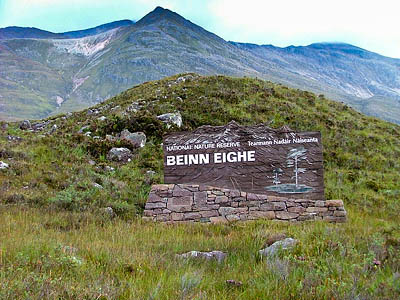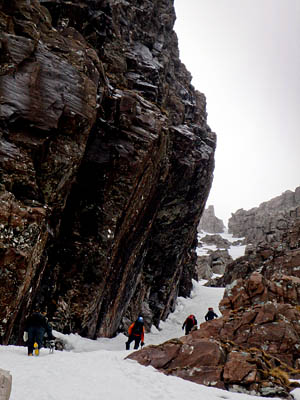The deaths of eight RAF crew members on a remote mountainside were commemorated in a ceremony that also marked the birth of a new approach to rescues.
Yesterday’s service also marked the coming into being of Britain’s first national nature reserve on Beinn Eighe after the mountain was bought for the nation by the Nature Conservancy.
In the early hours of 14 March 1951, a Lancaster bomber from RAF Kinloss flew into the side of the Torridon mountain, killing all on board. The remote and harsh terrain at the site meant rescuers took days to reach the wreckage and it was months before all the bodies could be recovered.
The site is now known to climbers as Fuselage Gully and in 2008 a mountaineer’s life was saved when the propeller of one of the aircraft’s Rolls-Royce Merlin engines arrested his fall after he was swept down the gully.
The RAF mountain rescue teams involved in the 1951 incident learnt valuable lessons from the operation and this led to major improvements in the equipping and training of the country’s RAF teams, which have also been adopted by the volunteer civilian mountain rescue teams.
Peter McGowan, a former RAF Kinloss team leader said: “It is important to remember the victims of this tragic crash and the dramatic effect this had on the development of the RAF Kinloss rescue team. Back then, the team was just in its infancy, but the Lancaster tragedy was key to it becoming the highly equipped and trained unit it is today.”
Scottish Natural Heritage, the successor body to the Nature Conservancy and the Nature Conservancy Council, now looks after the mountain, which has two munros among the nine summits along its ridge.
There is a long history of involvement of SNH staff within the local mountain rescue team and current reserve manager, Eoghain Maclean, is leader of the Torridon and Kinlochewe Mountain Rescue Team.
“Beinn Eighe is a very special place, and as a national nature reserve attracts thousands of visitors every year. Most of the people who visit the reserve will not be aware of this sad but important story and it is fitting that we can pay our respects to the airmen who died,” he said.
Beinn Eighe’s quartzite peaks contrast with the Torridonian sandstone tops of the other mountains in the area. Its highest point is Ruadh-stac Mòr at 1,010m (3,314ft).

